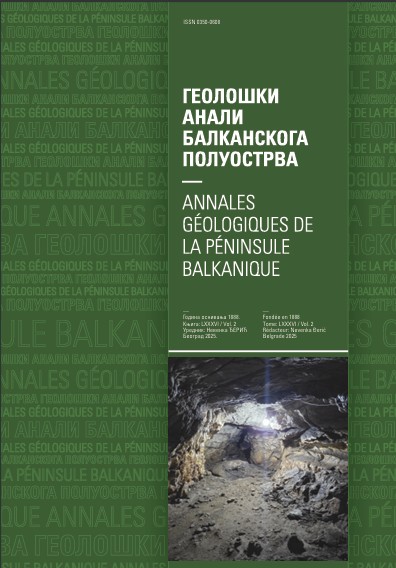Ceramic clays from the western part of the Tamnava Tertiary Basin, Serbia: deposits and clay types
Abstract
Based on geological, mineralogical, physical, chemical and technological investigations in the Tamnava Tertiary Basin near Šabac town (western Serbia), deposits of ceramic clays were studied. These ceramic clays are composed of kaolin-illite with a variable content of quartz, feldspars, mica, iron oxides and hydroxides, and organic matter. Four main types of commercial clays were identified: i) red-yellow sandy-gravely (brick clays); ii) grey-white poor sandy (ceramic clays); iii) dark-carbonaceous (ceramic clays); and iv) lamellar (“interspersed”) fatty, poor sandy (highly aluminous and ferrous clays). Ceramic clays are defined as medium to high plastic with different ranges of sintering temperatures, which makes them suitable for the production of various kinds of materials in the ceramic industry.
Copyright (c) 2022 Geološki anali Balkanskoga poluostrva

This work is licensed under a Creative Commons Attribution 4.0 International License.










